 "ttyymmnn" (ttyymmnn)
"ttyymmnn" (ttyymmnn)
05/17/2016 at 12:35 • Filed to: planelopnik, planelopnik history
 9
9
 14
14
 "ttyymmnn" (ttyymmnn)
"ttyymmnn" (ttyymmnn)
05/17/2016 at 12:35 • Filed to: planelopnik, planelopnik history |  9 9
|  14 14 |
Welcome to This Date in Aviation History , getting you caught up on milestones, important historical events and people in aviation from May 14 - May 17.
!!! UNKNOWN CONTENT TYPE !!!
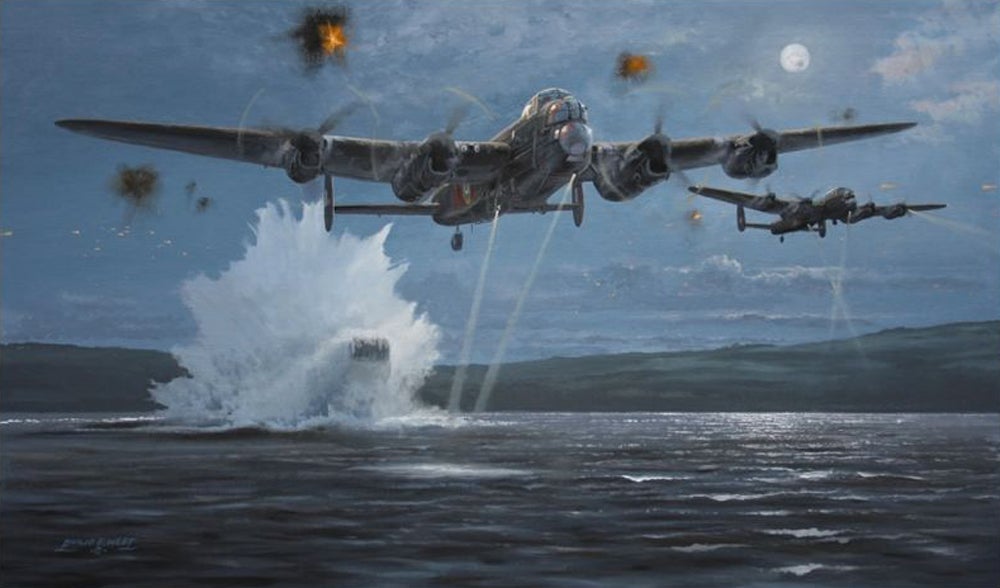
May 16-17, 1943 – RAF bombers carry out Operation Chastise . The !!!error: Indecipherable SUB-paragraph formatting!!! traces a meandering course through western Germany from the mountainous !!!error: Indecipherable SUB-paragraph formatting!!! region into the !!!error: Indecipherable SUB-paragraph formatting!!! . During the early to mid twentieth century, the valley of the Ruhr was the primary location for much of Germany’s manufacturing, as the waters of the river provided both pure water for the manufacture of steel and hydroelectric power via the !!!error: Indecipherable SUB-paragraph formatting!!! and !!!error: Indecipherable SUB-paragraph formatting!!! Dams. The !!!error: Indecipherable SUB-paragraph formatting!!! also flowed through this strategic region, with the !!!error: Indecipherable SUB-paragraph formatting!!! also playing a vital role in German manufacturing and farm irrigation. Even before WWII broke out, the British Air Ministry identified these dams, and others like them, as possible strategic targets that could be destroyed should war against Germany arise, as they predicted it might. Breaching the dams would not only drain water supplies and cut hydroelectric power, but it was hoped that catastrophic flooding would damage factories, destroy rail lines, and hinder transport on inland waterways. But once the decision to destroy the dams was taken, the RAF was faced with a singular problem: How to do it? A torpedo wouldn’t work, since the dams were protected by multiple torpedo nets. The RAF felt they could eventually reduce the dams through traditional bombing, but it would take tons and tons of bombs, or perhaps one huge bomb for which there was no aircraft capable of carrying it, nor was the level of accuracy required possible at the time. An entirely novel approach was needed. !!!error: Indecipherable SUB-paragraph formatting!!! was the Assistant Chief Designer at !!!error: Indecipherable SUB-paragraph formatting!!! , and for some time he had been working on a bouncing bomb concept that could be used against shipping. It soon became clear that such an idea could also be used against dams. The canister-shaped bomb would have to be dropped from a precise level above the water, at a precise distance from the dam, while rotating backwards at 500 rpm. Then it would skip across the water, over the torpedo nets, and settle to the base of the dam and explode using a hydroelectric fuse. While the bomb itself was fairly complex, the targeting system was anything but. To determine the correct distance from the dam for dropping the bomb, a simple sight with two prongs was used to align with towers on the dam. For altitude, two spotlights were shined down on the surface of the water, and when the circles of light joined, the bomber was at the correct altitude. On the night of May 16, nineteen specially modified !!!error: Indecipherable SUB-paragraph formatting!!! bombers set out for Germany. Almost immediately, aircraft began having troubles, and some returned to base, while others were lost to enemy flak or crashed into antennas or power pylons. But the remaining planes forged ahead, and the Möhne Dam was the first to be hit and breached, followed by the Eder Dam. The Sorpe Dam, which was an earthen dam with a concrete core, was not breached, nor was the Ennepe Dam.
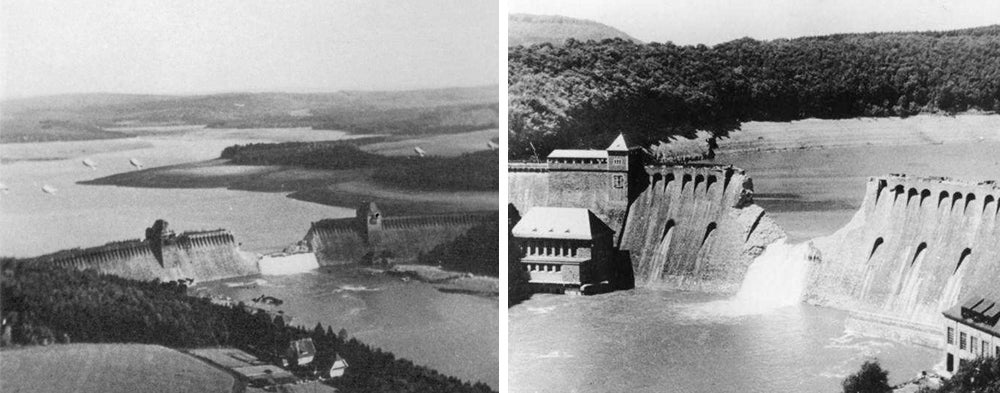
The Möhne and Eder dams the morning after the raids
On the return flight, two more Lancasters were lost, bringing the total to 8 aircraft shot down and 53 airmen killed. The results of the raid were certainly catastrophic but, despite the destruction, the Germans recovered quickly. In all, 1,600 were killed, but 1,000 of those were Russian prisoners and forced laborers. And though factories were damaged and power was interrupted, water and electricity supplies had returned to normal in just a month’s time. However, the raids did have the strategic result of keeping the Luftwaffe occupied protecting other similar infrastructure targets, and the development of extremely large bombs continued, resulting in the
!!!error: Indecipherable SUB-paragraph formatting!!!
and
!!!error: Indecipherable SUB-paragraph formatting!!!
“
!!!error: Indecipherable SUB-paragraph formatting!!!
” which were used with great effect against hardened German targets later in the war.
(Illustration author unknown; dam photos via the Deutsches Bundesarchiv)
!!! UNKNOWN CONTENT TYPE !!!

May 17, 1943 – The crew of the Memphis Belle flies its 25th and final mission. In 1935, Boeing carried out the maiden flight of their new, four-engined bomber which they called the Model 299. The huge bomber was bristling with five .30 caliber defensive machine guns, so many for its day that Richard Williams, a reporter for the Seattle Times, described it as Boeing’s new “Flying Fortress,” because surely, this new bomber would be practically impervious to enemy attack. Boeing liked the name, trademarked it, and a legendary bomber, the !!!error: Indecipherable SUB-paragraph formatting!!! , was born. But in practice, the Flying Fortress was anything but. By the time the !!!error: Indecipherable SUB-paragraph formatting!!! began bombing missions into German-occupied Europe, and though the defensive armament had increased to 10 machine guns, or more, the lack of escort fighters that could protect the lumbering bombers meant that they were easy prey for German fighters and sitting ducks for highly accurate flak ( flak is actually an acronym for Fliegerabwehrkanone , or anti-aircraft artillery). Add to that the fact that the American bombers flew their missions during daylight hours to increase accuracy, and the American bombers began to suffer horrible losses. In October 1943 alone, the 8th Air Force lost 176 bombers, more than 5 per day. The aircrews, made up mostly of boys barely 18 years old and flown by pilots who were only in their 20s, were expected to fly 25 missions to complete their tour. But with average loss rate of 8-percent of the bombers per mission at that time, the odds were very small that a complete crew would fly all of their missions and return safely. Throughout the war, the number of missions needed to complete a tour fluctuated depending on need and risk assessment, sometimes going as high as 35. This was still an arbitrary number, but it gave the crews something to look forward to, a light at the end of a tunnel filled with fighters and flak that just might be attainable. Still, over 3,000 B-17s were lost in the war, and though the advent of long-range escort fighters helped fend off the German attackers, flak always took its toll. Despite those terrible odds, there were bombers and crews that managed to complete their tour, and one of those to do so famously (though not first—see author’s note below), was the Memphis Belle . The Belle was a B-17F (serial number 41-24485) assigned to the 324th Bombardment Squadron (Heavy), !!!error: Indecipherable SUB-paragraph formatting!!! and was commanded by Captain !!!error: Indecipherable SUB-paragraph formatting!!! . Flying from Bassingbourn, Scotland, the Belle and her crew carried out its first mission on November 7, 1942 against targets in Brest, France, and flew the majority of their missions over Brittany, with some missions to the Netherlands and a handful into Germany.
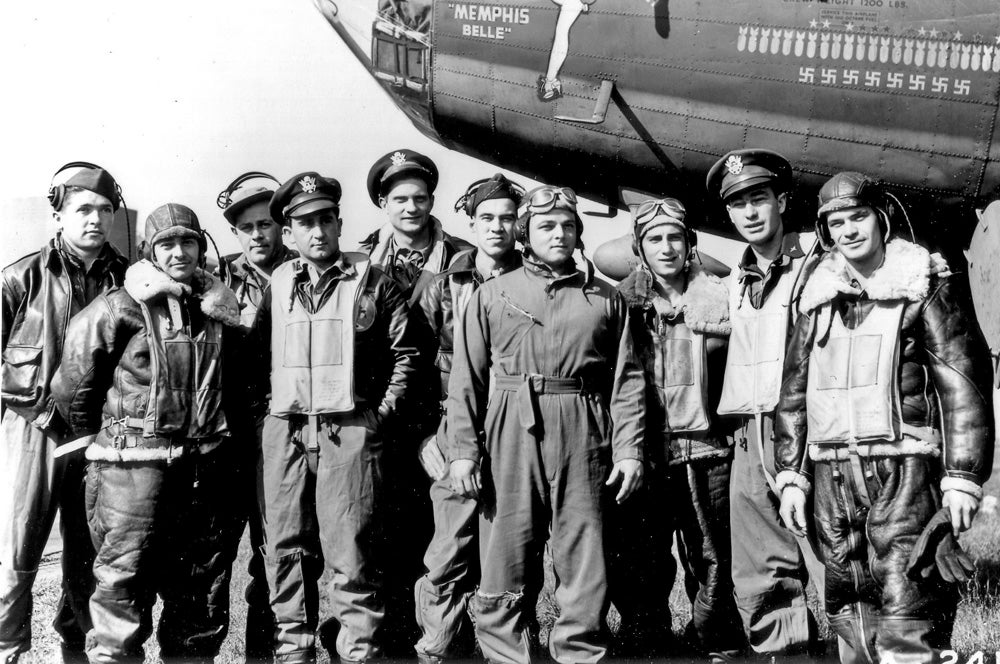
The crew of the Memphis Belle prior to their final mission (L to R): Harold P. Loch; Cecil H. Scott; Robert Hanson; James Verinis; Robert K. Morgan; Charles B. Leighton; John P. Quinlan; Casimer A “Tony” Nastal; Vincent Evans; Clarence E. “Bill” Winchell
Throughout its tour, the Belle was shot up numerous times by fighters and punctured by flak. She went through nine engines, had both wings replaced, had the tail replaced twice, and both landing gear assemblies were replaced. But her luck held, and as her 25th mission approached (As was the practice at the time, the crews and the planes were often interchangeable; so, while the crew completed its 25th mission on May 17, 1943 bombing the submarine pens at Lorient, France, the Belle completed her 25th mission two days later with a different crew. Morgan’s crew completed four of its missions in four different aircraft.), the US Army Air Corps saw an opportunity to generate some positive news for the home front. The Army dispatched a film crew, directed by noted director and producer !!!error: Indecipherable SUB-paragraph formatting!!! , to make a full-color !!!error: Indecipherable SUB-paragraph formatting!!! of the final flight titled Memphis Belle: The Story of a Flying Fortress which was released to the American public in 1944. Following the Belle’s final mission, the plane and her crew flew back to the US, where they toured the country to sell war bonds and to help boost the nation’s morale. Following the war, the crew returned to life in the US, and the final member of the crew, top turret gunner Harold Loch, passed away in October 2004. In 1945, the Memphis Belle was rescued from reclamation and purchased by the City of Memphis for $350. After flying her to Memphis, the city displayed the bomber outdoors into the 1980s, where it slowly deteriorated and was eventually stripped of almost all her internal components by souvenir hunters. Finally, in 2004, the aircraft was transferred to National Museum of the United States Air Force in Dayton, Ohio, where it is preserved and is undergoing restoration. Hollywood also produced a !!!error: Indecipherable SUB-paragraph formatting!!! about the plane and her crew, The Memphis Belle , which was released in 1990. (US Air Force photos)
!!! UNKNOWN CONTENT TYPE !!!
Author’s note:
The
Memphis Belle
garnered much notoriety for the completion of 25 missions, due in no small part to the documentary about their final mission. But it was not the first B-17 to complete its tour. That distinction goes to the crew of
Hell’s Angels
(B-17F, serial number 41-24577), which completed its 25th mission on May 13, 1943, six days ahead of the
Belle
. However, the
Belle
was the first to be sent back to the US because the crew of
Hell’s Angels
signed on for another tour and eventually flew a total of 48 missions before returning to the US the following year. But
Hell’s Angels
still wasn’t the first bomber to reach that mission milestone. The crew of the
!!!error: Indecipherable SUB-paragraph formatting!!!
Hot Stuff
completed its 25th mission on February 7, 1943, three-and-a-half months ahead of the
Belle
, then flew another six missions before returning to the US. While the
Belle
wasn’t the first to complete its tour, it is certainly the most well known, and its fame is likely a simple matter of fate. Or Army record keeping. It’s unclear why the
Belle
was chosen for such publicity, but regardless, she and her crew serve as a testament to the courage of thousands of young men who flew into harm’s way, many of whom did not return.
!!! UNKNOWN CONTENT TYPE !!!
Short Take Off
!!! UNKNOWN CONTENT TYPE !!!

May 14, 2013 – The Northrop Grumman X-47B becomes the world’s first unmanned aircraft to launch from an aircraft carrier.
In 2000, the US Navy committed to the development of an Unmanned Combat Air System (UCAS) and awarded contracts for demonstrator aircraft to Boeing and Northrop Grumman. Following its launch from the
!!!error: Indecipherable SUB-paragraph formatting!!!
(CVN 77), the X-47B performed the first autonomous touch-and-go landings three days later and the first arrested carrier landing on July 10. The X-47B also demonstrated autonomous aerial refueling in April of 2015. The X-47 program has finished, and the Navy plans to open the competition for a deployable fleet of
!!!error: Indecipherable SUB-paragraph formatting!!!
(UCLASS) aircraft in 2016, with regular operations beginning in 2020.
(US Navy photo)
!!! UNKNOWN CONTENT TYPE !!!

May 14, 1973 – The launch of Skylab, the United States’ first orbiting space station. Skylab was launched into Earth orbit atop a modified !!!error: Indecipherable SUB-paragraph formatting!!! rocket and, after deploying, orbited the planet for six years. During that time, three manned missions were sent to the station, where the crews performed scientific experiments and made observations of the Earth and Sun. NASA originally intended to use the !!!error: Indecipherable SUB-paragraph formatting!!! , under development at the time, to boost Skylab to a higher orbit, refurbish it, and expand it to accommodate 6 to 8 astronauts, thus extending Skylab’s mission for an additional five years. However, delays in the Shuttle program made that impossible, and Skylab re-entered the atmosphere and disintegrated over the Pacific Ocean and western Australia in 1979. (NASA photo)
!!! UNKNOWN CONTENT TYPE !!!
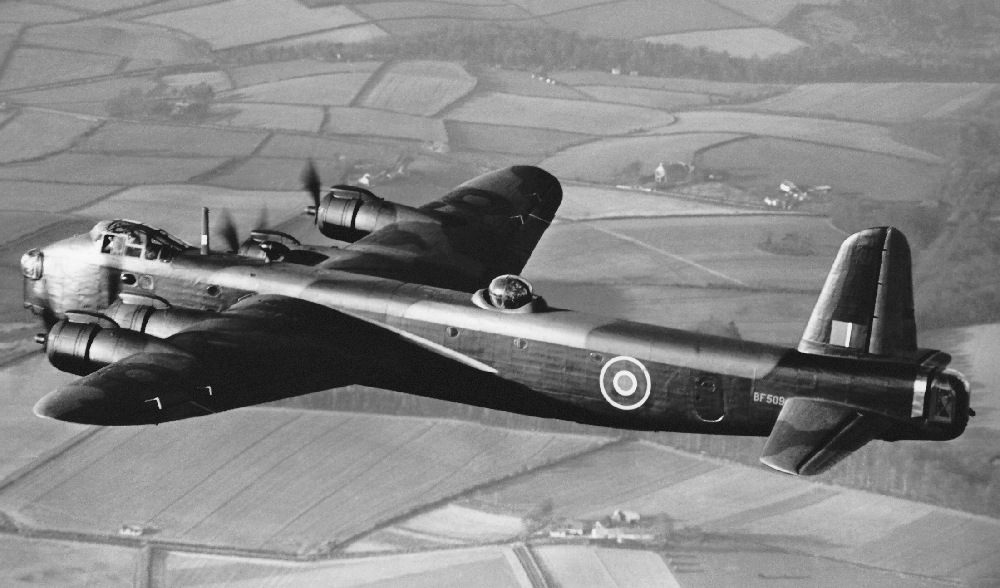
May 14, 1939 – The first flight of the Short Stirling, a heavy bomber developed for the RAF and the first four-engine heavy bomber of WWII. Stirling entered service in 1941 and was capable of carrying an enormous 14,000 lb bomb load. It was also larger than both the !!!error: Indecipherable SUB-paragraph formatting!!! and the !!!error: Indecipherable SUB-paragraph formatting!!! , the bombers that were designed to replace it. However, both of those aircraft began life as twin-engine aircraft, while the Stirling was conceived with four engines from the beginning. The Stirling’s service life was relatively short, and it was withdrawn from frontline duties by 1943. Following its withdrawal, it was used primarily for mine laying, and also played a significant role in the D-Day invasion as a glider tug. (Photo via Royal Air Force)
!!! UNKNOWN CONTENT TYPE !!!
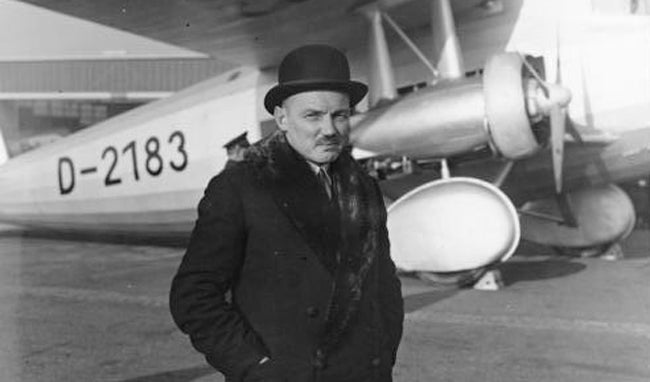
May 14, 1894 – The birth of Claude Honoré Desiré Dornier. Originally named Claudius, Dornier was born in Kempten im Allgäu in Bavaria, the son of a French wine importer (hence his French name). After graduating from the !!!error: Indecipherable SUB-paragraph formatting!!! in 1907, Dornier went to work for Luftshiffbau Zeppelin in 1910, and soon caught the eye of Count !!!error: Indecipherable SUB-paragraph formatting!!! and was appointed as the count’s personal scientific advisor. His work in metallurgy led to the development of the !!!error: Indecipherable SUB-paragraph formatting!!! , the first stressed-skin, all-metal aircraft to enter production. Dornier founded his own company, !!!error: Indecipherable SUB-paragraph formatting!!! , in 1914, where he produced some of the iconic aircraft flown by the Luftwaffe in WWII, such as the !!!error: Indecipherable SUB-paragraph formatting!!! “Flying Pencil” and the !!!error: Indecipherable SUB-paragraph formatting!!! ( Arrow ). Dornier died in 1969. (Photo via !!!error: Indecipherable SUB-paragraph formatting!!! )
!!! UNKNOWN CONTENT TYPE !!!

May 15, 1963 – The launch of Mercury-Atlas 9,
the 6th manned Mercury flight and the final flight of
!!!error: Indecipherable SUB-paragraph formatting!!!
. It was also the last time NASA would launch a spacecraft with only a single astronaut on board. Astronaut
!!!error: Indecipherable SUB-paragraph formatting!!!
completed 22 orbits of the Earth in the capsule
Faith 7
before splashing down on into the Pacific Ocean on May 16. The flight marked the first time an American astronaut had spent an entire day in space (officially, the flight lasted 1 day, 10 hours, 19 minutes, 49 seconds), and Cooper was also the first American to sleep in space. Following Project Mercury, NASA moved on to the two-man
!!!error: Indecipherable SUB-paragraph formatting!!!
, and Cooper would fly as Command Pilot of
!!!error: Indecipherable SUB-paragraph formatting!!!
, becoming the first astronaut to make a second orbital flight.
(NASA photo)
!!! UNKNOWN CONTENT TYPE !!!
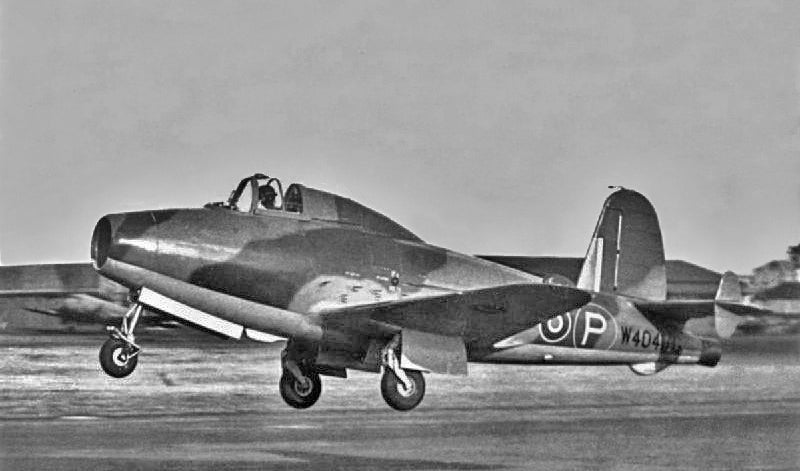
May 15, 1941 – The first flight of the Gloster E.28/39, the first British jet-powered aircraft. British engineer !!!error: Indecipherable SUB-paragraph formatting!!! is credited with the invention of the turbojet engine (though credit for the first operational jet engine goes to Germany’s !!!error: Indecipherable SUB-paragraph formatting!!! ), and in September of 1939, Gloster received a specification from the Air Ministry for an airplane that could test one of Whittle’s new engines in flight. The result was the Gloster E.28/39 (the unwieldy name comes from the aircraft’s conforming to the 28th specification in the year 1939), and two prototypes were ordered. Testing proved successful, and paved the way for the !!!error: Indecipherable SUB-paragraph formatting!!! , the first British jet fighter and the first operational Allied jet aircraft of WWII. (Imperial War Museum photo)
!!! UNKNOWN CONTENT TYPE !!!
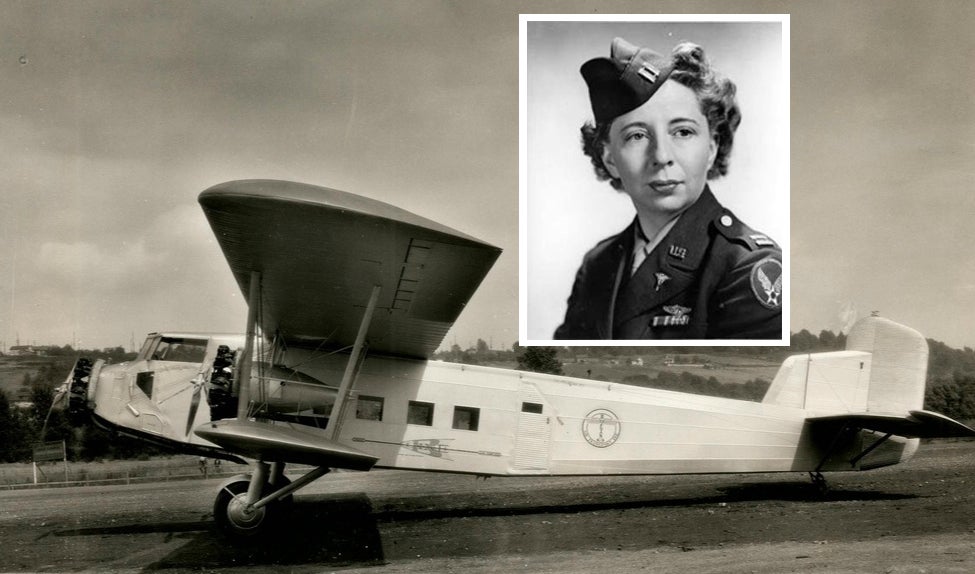
May 15, 1930 – Ellen Church becomes the world’s first stewardess. Born in Cresco, Iowa in 1904, Church was a pilot and registered nurse whose goal was to become a pilot. When Boeing Air Transport (eventually !!!error: Indecipherable SUB-paragraph formatting!!! ) refused to hire her in that capacity, she put her nursing skills to work when she was hired as a stewardess in order to help allay the fears of the flying public. She took her first as a stewardess on May 15, 1930 on a !!!error: Indecipherable SUB-paragraph formatting!!! flying from Oakland to San Francisco. Though an automobile accident ended her flying career after just 18 months, Church served in the !!!error: Indecipherable SUB-paragraph formatting!!! in WWII as a flight nurse, earning the !!!error: Indecipherable SUB-paragraph formatting!!! . Church died in a horse riding accident in 1965. (Boeing 80 photo via !!!error: Indecipherable SUB-paragraph formatting!!! , Church photo via !!!error: Indecipherable SUB-paragraph formatting!!! )
!!! UNKNOWN CONTENT TYPE !!!
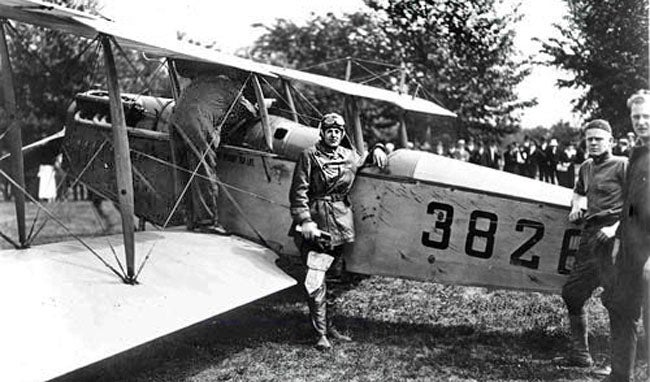
May 15, 1918 – The first regular US airmail service commences. With the advent of (relatively) reliable air transport following WWI, flying mail in the United States was begun by pilots of the US Army Air Service. Under the command of Major !!!error: Indecipherable SUB-paragraph formatting!!! , six !!!error: Indecipherable SUB-paragraph formatting!!! “Jenny” biplanes began operating on the route between Washington, DC and New York City, with a stop in Philadelphia, PA. The service got off to an inauspicious start, when Army pilot 2nd Lt. George Boyle got lost and made a hard landing, and the first delivery had to be completed by truck. After four months, the Air Mail service was taken over by the US Post Office Department using civilian pilots. (US Army photo)
!!! UNKNOWN CONTENT TYPE !!!
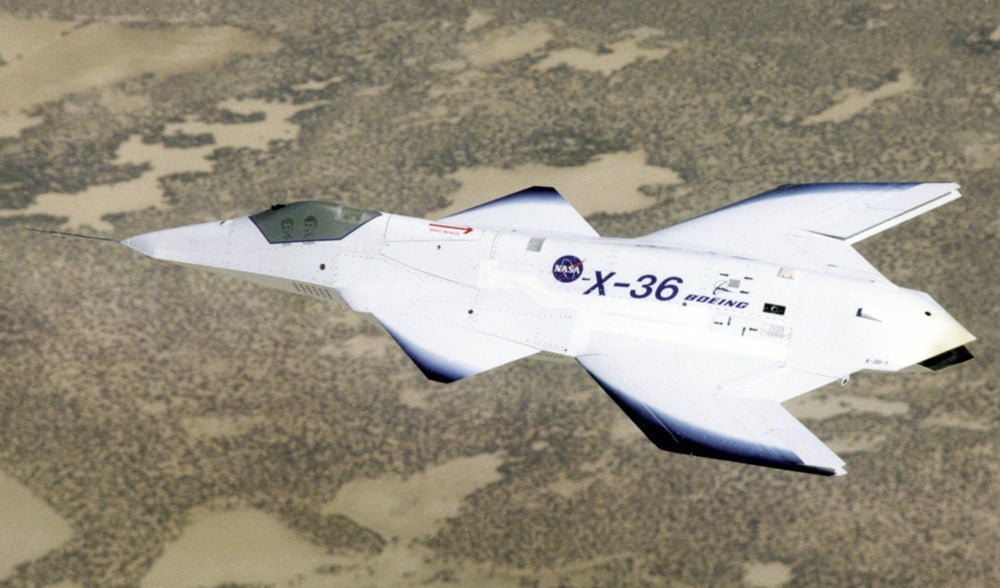
May 17, 1997 – First flight of the McDonnell Douglas X-36, an experimental tailless aircraft built by McDonnell Douglas (later Boeing) to explore flight by aircraft without a traditional vertical tail assembly. Built at 28-percent scale of a possible manned fighter, the X-36 was controlled by a pilot on the ground via flight controls provided by a forward !!!error: Indecipherable SUB-paragraph formatting!!! , split ailerons (also called a !!!error: Indecipherable SUB-paragraph formatting!!! ), and !!!error: Indecipherable SUB-paragraph formatting!!! . The X-36 made 31 successful research flights, and while the aircraft performed beyond expectations, displaying excellent maneuverability and stability, development ceased following the successful test program. Two prototypes were built, and one resides at the !!!error: Indecipherable SUB-paragraph formatting!!! , while the other is on display at the !!!error: Indecipherable SUB-paragraph formatting!!! at !!!error: Indecipherable SUB-paragraph formatting!!! . (NASA photo)
!!! UNKNOWN CONTENT TYPE !!!
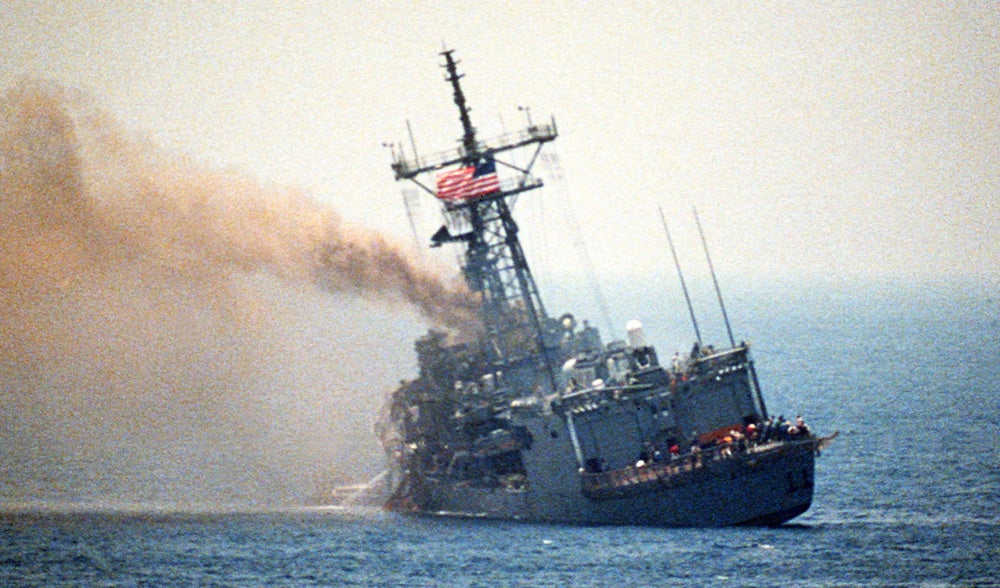
May 17, 1987 – An Iraqi fighter fires two Exocet missiles into the USS Stark (FFG-31). During tensions in the Persian Gulf in the 1980s, the US Navy assumed the task of patrolling the Gulf, particularly the strategic !!!error: Indecipherable SUB-paragraph formatting!!! , to ensure the safe passage of cargo ships in the embattled region. For reasons that remain under dispute, an Iraqi !!!error: Indecipherable SUB-paragraph formatting!!! fired two French-made !!!error: Indecipherable SUB-paragraph formatting!!! anti-ship missiles at the Stark . The first missile penetrated the Stark just above the waterline but did not explode, while the second entered the ship and detonated in the crew quarters, killing 37 sailors and injuring 21. The Stark’s crew failed to detect either the aircraft or the missiles until it was too late, and no defensive countermeasures were taken to stop attack. The Iraqis claimed that the Stark was in its territorial waters, but the US Navy held that the frigate was actually in international waters at the time. Facing courts-martial following the incident, the Stark’s captain and her Tactical Action Officer both chose early retirement. (US Navy photo)
!!! UNKNOWN CONTENT TYPE !!!
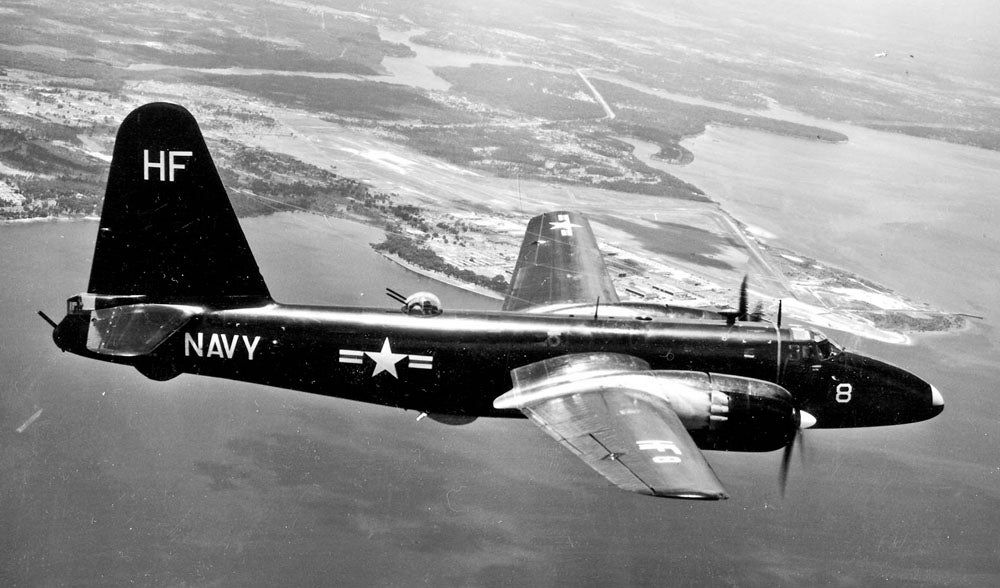
May 17, 1945 – The first flight of the Lockheed P-2 Neptune, a maritime patrol and anti-submarine (ASW) aircraft developed to replace the !!!error: Indecipherable SUB-paragraph formatting!!! . The P-2 entered service in 1947 and was the first aircraft to be fitted with both piston engines and jet engines, with both types of engine running on the same fuel to save space and limit complexity. Despite the Neptune’s maritime/ASW mission, small numbers of Neptunes were deployed as carrier-based nuclear bombers as a stop-gap measure. Those planes would either ditch or recover to land bases after delivering their weapons. In 1946, a modified Neptune nicknamed !!!error: Indecipherable SUB-paragraph formatting!!! flew from Perth, Australia to Columbus, Ohio, setting an unrefueled distance record of 11,236 miles, a record for piston-powered flight that was not broken until the !!!error: Indecipherable SUB-paragraph formatting!!! flew around the world nonstop in 1986. Replaced by the !!!error: Indecipherable SUB-paragraph formatting!!! , Neptunes were retired from military service in 1984, though many still fly as civilian firefighters. (US Navy photo)
!!! UNKNOWN CONTENT TYPE !!!
Recent Aviation History Posts
!!! UNKNOWN CONTENT TYPE !!!
!!! UNKNOWN CONTENT TYPE !!!
!!! UNKNOWN CONTENT TYPE !!!
!!! UNKNOWN CONTENT TYPE !!!
If you enjoy these Aviation History posts, please let me know in the comments. And if you missed any of the past articles, you can find them all at !!!error: Indecipherable SUB-paragraph formatting!!! .
!!! UNKNOWN CONTENT TYPE !!!
 MonkeePuzzle
> ttyymmnn
MonkeePuzzle
> ttyymmnn
05/17/2016 at 12:42 |
|
huh, interesting that the bombing of the dams was essentially so ineffective. certainly the movie ends with much celebration, and doens’t go into how they killed prisoners and the power was restored so quickly :S
 MonkeePuzzle
> ttyymmnn
MonkeePuzzle
> ttyymmnn
05/17/2016 at 12:46 |
|
“ Fliegerabwehrkanone”
learned something new.
 MonkeePuzzle
> ttyymmnn
MonkeePuzzle
> ttyymmnn
05/17/2016 at 12:51 |
|
Throughout its tour, the Belle was shot up numerous times by fighters and punctured by flak. She went through nine engines, had both wings replaced, had the tail replaced twice, and both landing gear assemblies were replaced.
also not captured in the movie (what is this, movie day?), and that fact that the planes were used interchangeably (which makes sense). but very cool!
 RamblinRover Luxury-Yacht
> ttyymmnn
RamblinRover Luxury-Yacht
> ttyymmnn
05/17/2016 at 12:51 |
|
There’s a pretty good Barnes Wallis exhibit at Brooklands. You know, in case you were needing another reason to go there.
 Jcarr
> ttyymmnn
Jcarr
> ttyymmnn
05/17/2016 at 12:51 |
|
My dad still has this poster hanging in his office

The cast is a who’s who of 90s cinema/tv:
Matthew Modine
Eric Stoltz
Tate Donovan
Billy Zane
Sean Astin
Harry Connick Jr.
John Lithgow
 MonkeePuzzle
> ttyymmnn
MonkeePuzzle
> ttyymmnn
05/17/2016 at 12:54 |
|
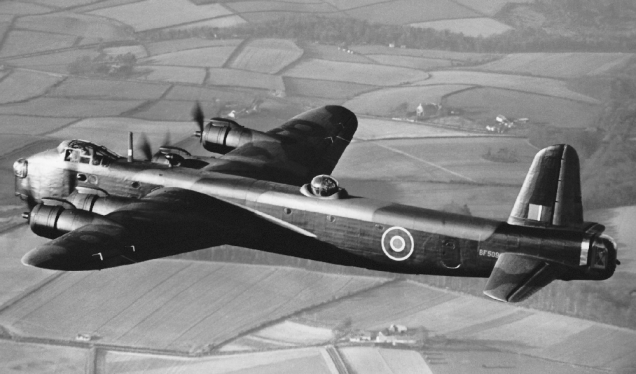
with the bulbous front, and how far the engine protrude from the wings, and the tail slightly forward on the body, this plane looks as if it made a sudden stop and many of its components slipped forward.
 HammerheadFistpunch
> ttyymmnn
HammerheadFistpunch
> ttyymmnn
05/17/2016 at 12:54 |
|
Just watched The Right Stuff again and if there was ever a right pilot for the job of sleeping in space it must have been Gordo Cooper...seems like they highlight his ability to fall asleep in any old place and handle stress with aplomb
 MonkeePuzzle
> ttyymmnn
MonkeePuzzle
> ttyymmnn
05/17/2016 at 13:32 |
|
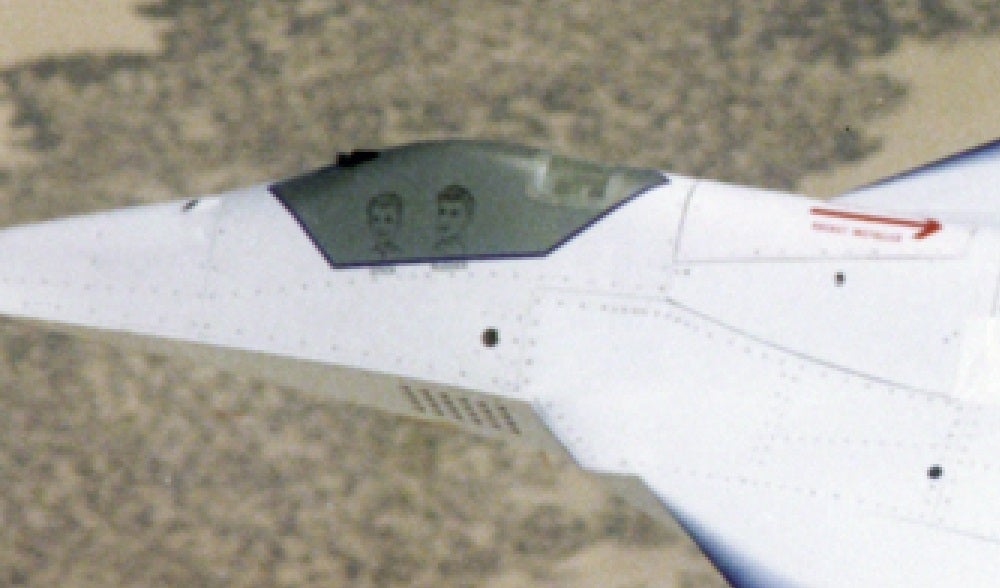
lols, “hi”
 MonkeePuzzle
> ttyymmnn
MonkeePuzzle
> ttyymmnn
05/17/2016 at 13:36 |
|
1946 to 1986, that is no small time to hold a distance record!
as someone who has done the Australia/US flight several times, I can’t imagine how painful it must have been. 55 hours and 17 minutes! that’s incredible!
 JustAnotherG6
> ttyymmnn
JustAnotherG6
> ttyymmnn
05/17/2016 at 13:36 |
|
When I first graduated college I was working at a gear shop that had made components that were installed on Space Lab.
 You can tell a Finn but you can't tell him much
> ttyymmnn
You can tell a Finn but you can't tell him much
> ttyymmnn
05/17/2016 at 15:19 |
|
I didn’t know that some of the P2's had jet engines too. The jet nacelles don’t really look like jets, they look more like sensor pods or something.
 just-a-scratch
> ttyymmnn
just-a-scratch
> ttyymmnn
05/17/2016 at 16:49 |
|
On the probability of finishing a set of B-17 missions:
Just to be picky, I have to say that an 8% chance that an aircraft will not return from a particular mission does not mean it’s statistically impossible to complete 25 missions. If each mission is an independent event with a probability of no return at 8%, it’s the same as a 92% likelihood of returning. So the probability of finishing 25 missions is P=(0.92)^25=0.124 or a bit better than 12% likelihood of finishing the set of missions.
It’s not impossible, just improbable (less than 50% probability). And yes, those odds suck.
 ttyymmnn
> just-a-scratch
ttyymmnn
> just-a-scratch
05/17/2016 at 16:56 |
|
Thanks for doing the math. No really, I am no math guy. I only know what I read. I’m comfortable enough with your math to edit the post. IIRC, the “you’ll never finish your tour” factoid came from the USAF itself. Yup, here it is.
However, the US Air Force Museum article about the Belle says, “it was highly unlikely that a bomber crew would finish their required 25 missions.” That jibes pretty well with your 12% figure.
Getting things right is important to me. I appreciate picky readers.
 just-a-scratch
> ttyymmnn
just-a-scratch
> ttyymmnn
05/17/2016 at 18:05 |
|
It’s no surprise to me that the AF historical info isn’t strictly accurate with calculating probabilities.
And keep bringing the articles. They're interesting. So, thanks.